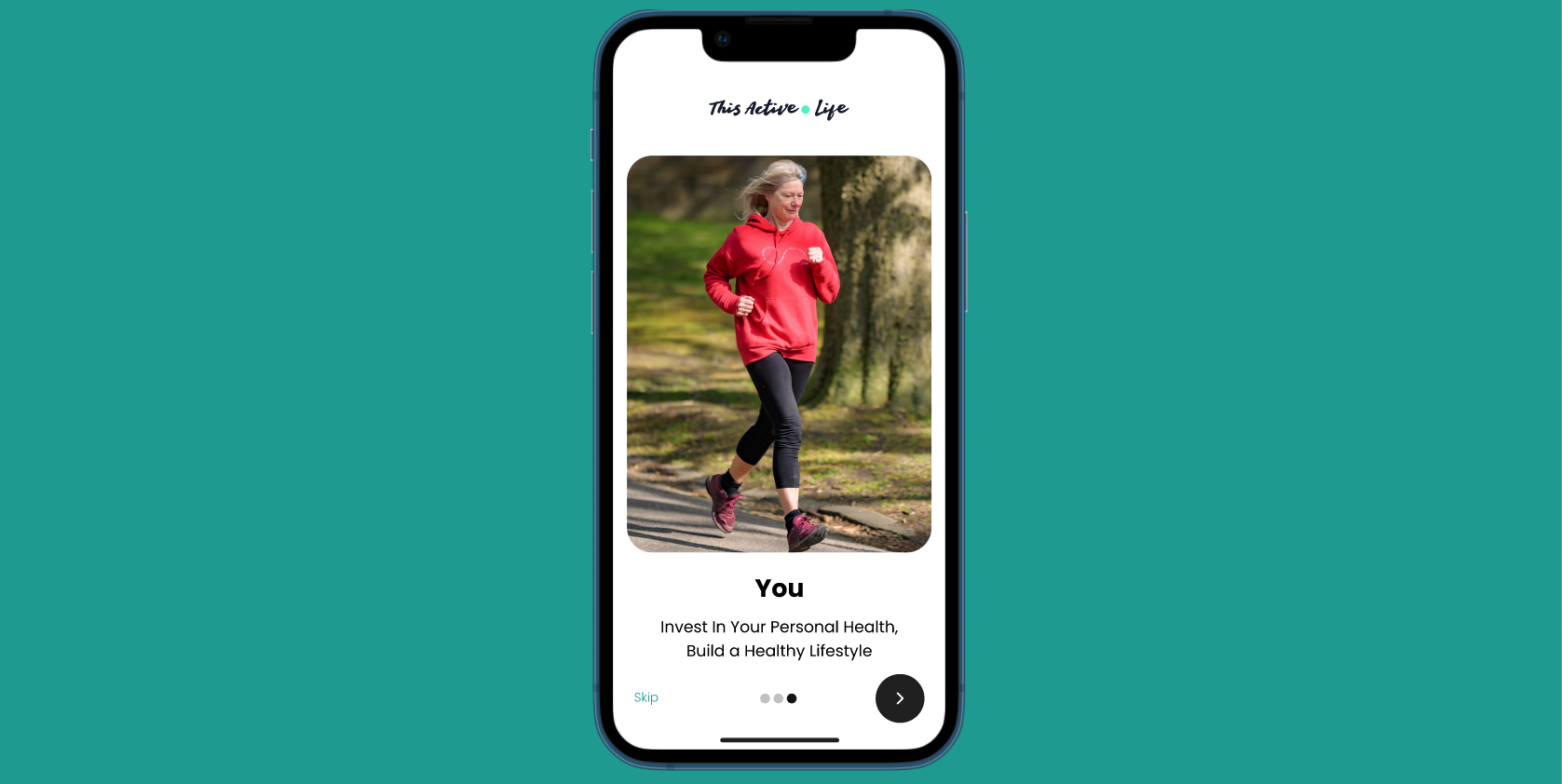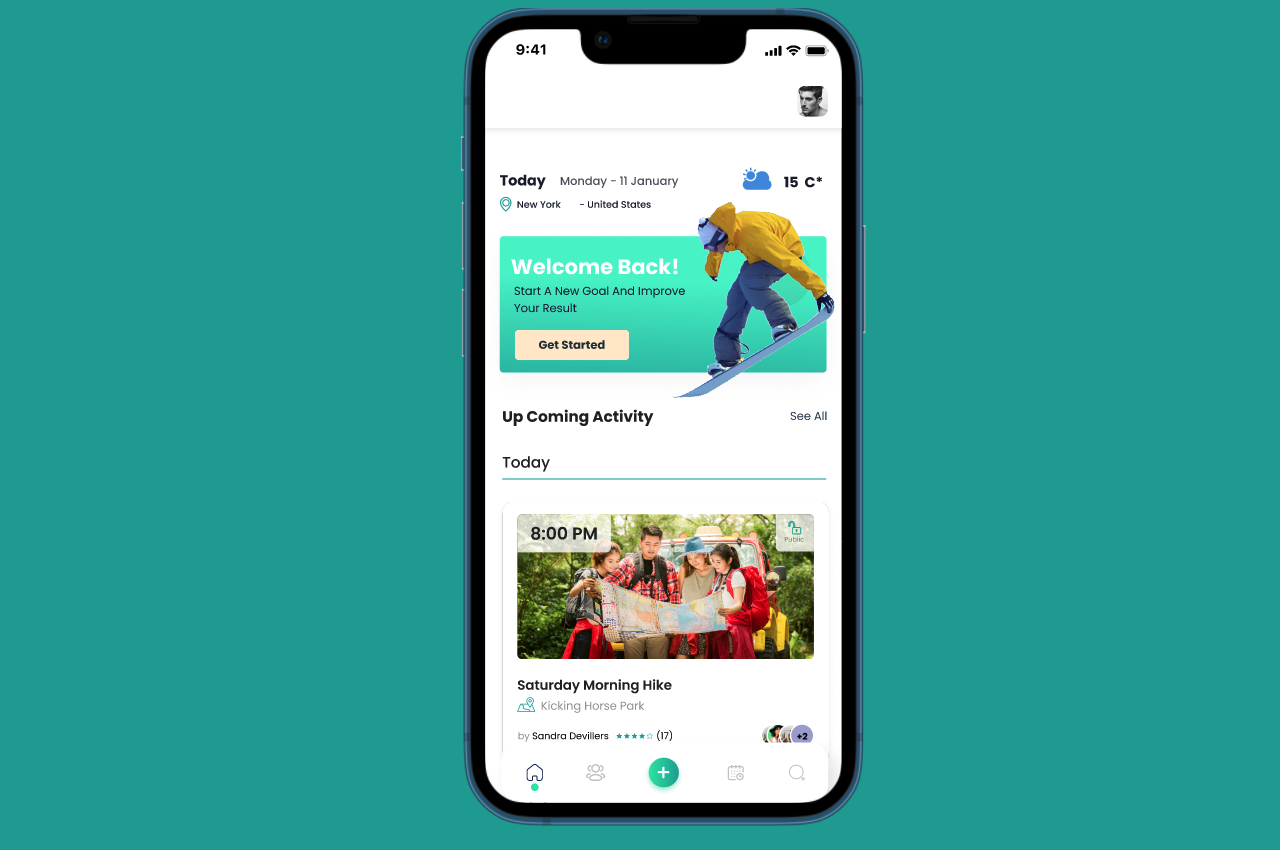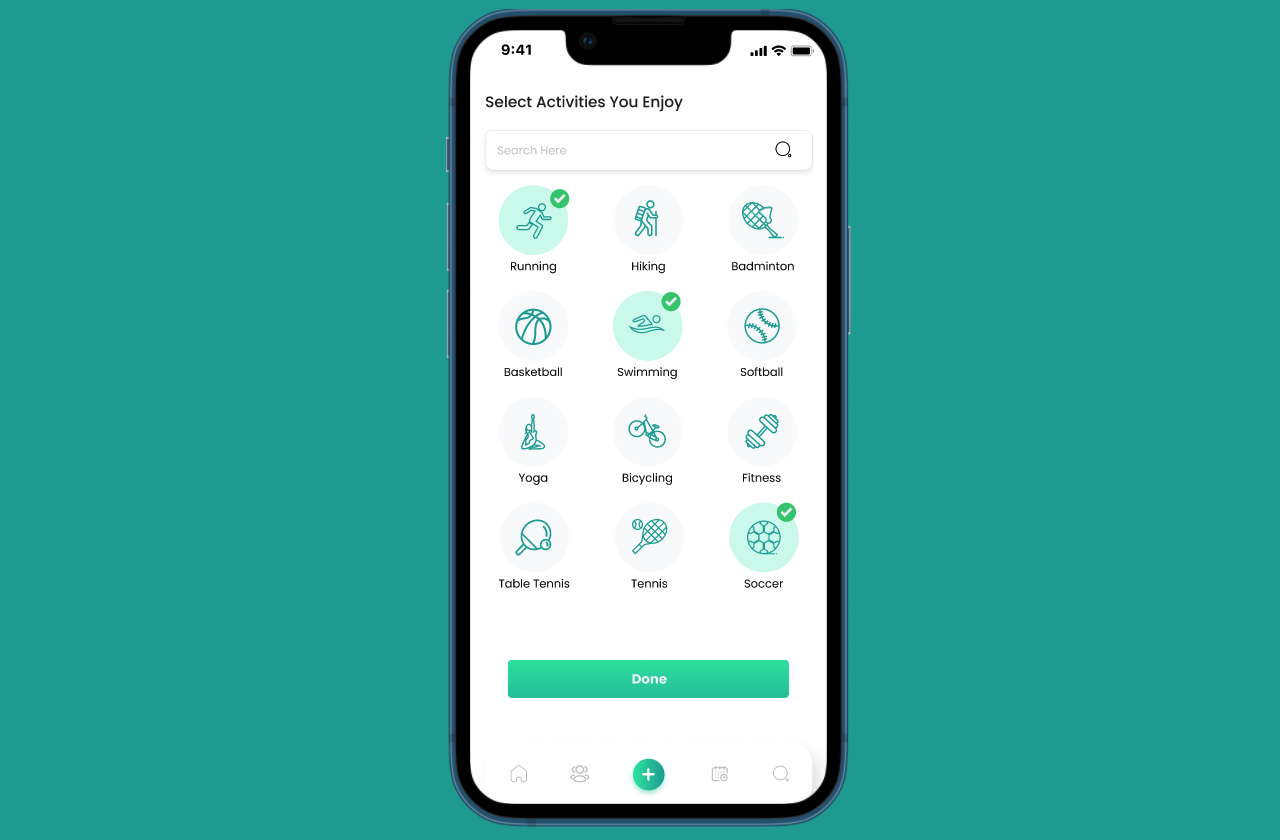
How might an app overcome the barriers to becoming and staying active?
Role: Product researcher working with software engineering firm Redlizardstudioz
Timeline: 2 months (November-December 2022)
Impact: Generative research found that This Active Life app was not the appropriate concept that suited their needs. Redlizardstudioz needs to refine the idea so they do not waste resources.
Background
The pandemic highlighted how over 50% of Americans are sedentary. The same amount suffers from chronic illness. Psychologists have long proven that modifying human behavior is encouraged with an accountability partner. The CDC advises that adults need 150 minutes of moderate intensity physical activity each week. This Active Life is an app aimed at connecting individuals in close proximity with a new and diverse group to expand their social network while staying active.
Objective
Understand participants’ behaviors, needs, and motivations, especially as it relates to accountability partners, resources (like time and money), and health goals.
Methodology
9 moderated user interviews, 30-45 minutes each (5 women and 4 men). Our team led a stakeholder interview, affinity mapping exercise, and competitive analysis
Tools used
Miro, Figma, Canva, Zoom, Discord
Lack of time and energy were reasons for not being active
The cost of being active is greater than the motivation. People feared judgment of their bodies and feeling incompetent. They rather sought an app that could boost their confidence.
No need for workout buddies to be social
The size of the social network did not affect how active individuals were. Some of the least active individuals had the most active social lives, and vice versa.
People don’t mind exercising alone
Most users exercised alone if they went to the gym. Accountability partners included spouses or family, or even people at their gym they saw regularly. Routine played the biggest role in consistency.
No need for an app to find accountability
New activities were sought through pre-established social networks (e.g., family, church, gym) rather than through technology. There was no interest in expanding social network through an app.
An exercise app needs a tracking function
Tracking on an app more important than social accountability. For some, leading a healthy life (exercising with friends, eating healthy) was enough motivation.
Key insights
Data from interviews and research was synthesized into five main problems.
“I probably wouldn't use an app like this. Maybe it’s my age, I didn’t even have internet until I was in high school. I’m not looking for an app to make me happy. I see my neighbors, tell them to come play basketball. It’s that simple.”
User personas
The busy mom
Age: 45
Accountant
Accountability: People she sees at the gym every morning and have developed a relationship with
Goals:
Maintaining routine of going to the gym
Setting aside “me” time
Losing weight
Problems:
Eating healthy or eating less
Family needs get in the way of time
Needs: Either an app that helps overcome initial fear and embarrassment at the gym, or a better meal tracker
The retired dad
Age: 63
Retiree with consulting gigs
Accountability: Camaraderie of local basketball team
Goals:
Having consistent movement
Developing social bonds
Maintaining skill level for basketball and fitness
Problems:
Could be interested in golfing more
Needs: No interest in an app to meet people to do social activities because he already has enough people in his life and groups to do them with
Recommendation
Research participants didn’t respond positively to This Active Life. They either already belong to a committed sports team (basketball, badminton), or were motivated enough to hit the gym on their own with a spouse or family member. Redlizardstudioz needs to re-evaluate their concept because it has little differentiation from location-based community apps like Meetup or Facebook.
Next steps
Reimagine the app to suit user needs. Consider filling the gap for true beginners or individuals with a sudden motivation (after having kids, for example) to become active again. There was strong interest in an app that helped users overcome the barriers of using gym equipment and feeling comfortable building a consistent routine. A personal trainer app or a customizable tracking app are ideal concepts to test and prototype.




